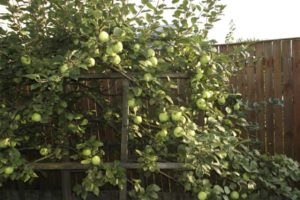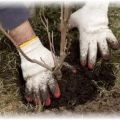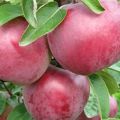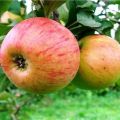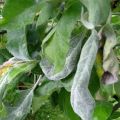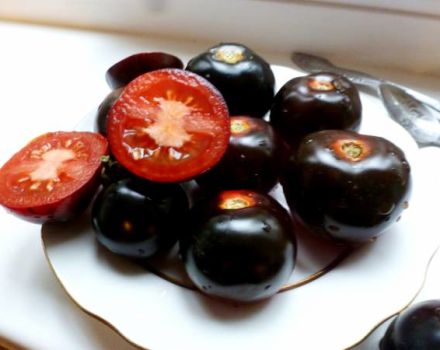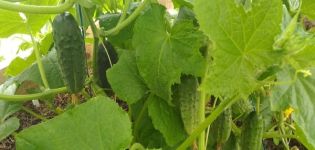How to plant an apple tree correctly if groundwater is close, the choice of variety and rules of care
The proximity of groundwater is a factor that can kill a tree or plunge it into conditions of risk of permanent fungal diseases. The presence of an aquifer located close to the surface of the soil is not a reason to abandon your own garden, it is enough to know how to plant an apple tree correctly if the groundwater is close.
Influence of groundwater on apple trees
What threatens the immediate vicinity of the apple tree with groundwater:
- Constant contact with water will lead to rotting of the rhizome, as a result of which the fruit tree will lose its pump, which produces the main portion of food. The tree will be sick for a long time, which will affect the fruiting and quality of crops, as a result, it will soon die.
- The layer located in the immediate vicinity of the roots will be replenished with melt water when the snow melts. With the intensive process of snow melting, the tree can be squeezed out of the ground, which will deprive it of some of its new roots and natural soil support.
- Excess moisture obtained during the ripening stage of the fruit will affect the ratio of acids and fruit sugars in the fruit.
- The humid environment near the tree trunk is a favorable microclimate for the reproduction of mosses, lichens, in which the pathogenic mycelium feels comfortable.
- Minerals, supplied in large quantities from an underground source, accumulate in the roots of the tree, which will also lead to disease and reduced yields.
In any case, constant contact of moisture with the roots of the tree is harmful. The selection or preparation of a site for planting must be given as much attention as when building a house.
Attention! Exceeding the permissible standard for the content of sulfates and chlorides in water dictates special planting conditions, such groundwater should be located at a depth of no higher than 3 m from the surface.
What is the high water level?
When examining the soil before laying the foundation, most amateur gardeners will learn about the close occurrence of groundwater, the presence of floaters on the site, which cause much more harm to the garden than a stable aquifer.
If such studies have not been carried out, then the depth of water can be determined by the depth of wells installed in the area or based on the depth of a well for a domestic water supply.
If the documents say "artesian well", then there is no threat to the garden, the water is at a depth of at least 10 m.
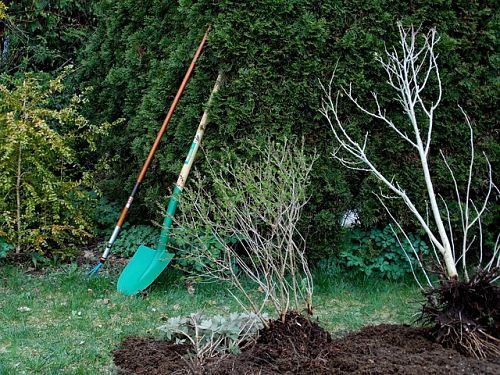
A well or a well on a site, the depth of which is not more than 2 meters, makes you wary for several reasons:
- In temperate climates, this is above the freezing point of the soil in winter.
- The roots of tall fruit trees can go 4-6 meters deep, direct constant contact with water is inevitable.
- When snow melts, lateral pressure is possible, the more intense the spring natural processes, the greater the threat that the tree will be forced out of loose soil or broken in dense soils.
It is difficult to significantly increase the level of the fertile layer due to the supply of soil, sand and clay from the quarry, and this is a temporary measure - the sand and peat will be washed out by spring waters, which will only delay the contact of the rhizome with water. The only way out is to choose a variety of apple trees with roots that do not reach the aquifer.
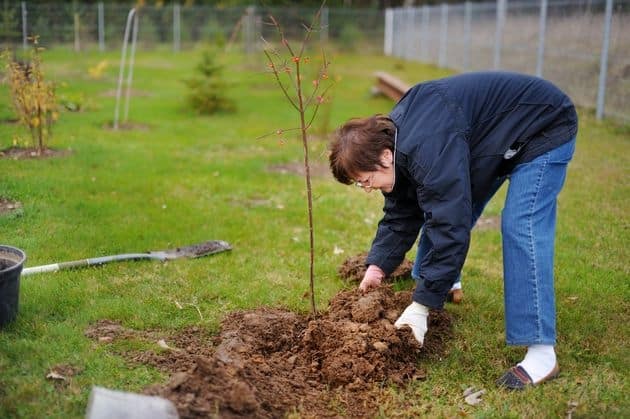
Attention! The aquifer can be uneven, its approach to the surface of the earth can be determined by swarming of midges over a certain area of the ground. You cannot plant trees in this place!
Apple varieties for close groundwater
When choosing a variety for an area located in close proximity to groundwater, it is preferable to choose columnar plants with spreading, horizontally growing roots. Dwarf or semi-dwarf rootstocks are what you need for low areas near natural water bodies, shallow wells that come out to the surface of the keys. Almost no variety on a seed stock is suitable for planting on such a site.
Summer
President, Ostankino, Malyukha, Medok are the best varieties of early ripening for growing in a continental climate with a high level of occurrence of the aquifer.
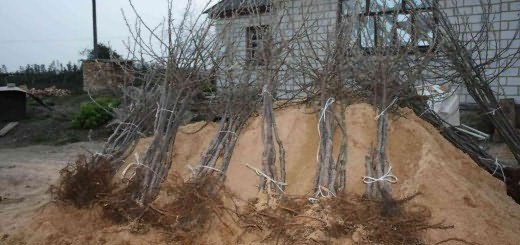
Autumn
The garden plot should have apple trees of different ripening periods, if necessary, set up a garden with autumn varieties of apple trees, the roots of which will not strive deep into the ground for many meters, it is worth turning the removal to the following varieties:
- Vasyugan;
- Dialogue;
- Iksha;
- Chervonets;
- Amber necklace.
Iksha is characterized by increased keeping quality - up to 3 months, and Chervonets amazes with gigantism of fruits - up to 350 g.

Winter
It remains to supplement the garden with winter varieties, choosing for the Moscow Region from several possible options that have gained more positive reviews from gardeners:
- Currency;
- Victoria;
- Coral;
- Moscow necklace;
- Natalyushka.
All of them belong to late-ripening varieties, they are stored for several months without losing their taste and presentation.

Training
In an area where there is a threat of a spring rise in groundwater, a drainage system is needed to divert water from tree trunks. The best option if the drain is not going into a ditch or a nearby ravine, but into a special tank - a septic tank, a rainwater tank located under the drain from the roof of a house, a deep concrete well - a sump, an isolated cesspool.
Planting trees if groundwater is close
Raising the level of the site for planting an apple tree by leveling the neighboring hill is also an option if the soil is loamy or sandy loam. With less technical and physical costs, it is possible to raise only the place of future planting of apple trees by compaction of the upper layer with crushed stone, on top of which there will be a fertile soil layer. This method is used when planting tall trees, but imposes on the owner additional responsibilities for caring for the plant - periodic replenishment of the layer of earth next to it.
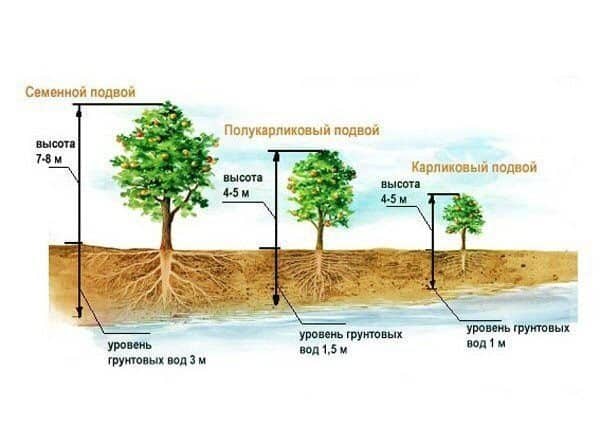
Finding fertile land in the Moscow region is an impossible task. Organic fertilizers are not suitable for all types of plants, it is easier to follow the path of least resistance - choose a few low-growing apple trees for planting. Of course, with each of them the yield will be several times less than with one high, but such plantings have a number of advantages:
- Different ripening periods and taste characteristics.
- The area for planting 18 columnar apple trees will require the same as for placing one tall with a spreading crown.
- Columnar plants are distinguished by early periods of fruiting, the first harvest will not have to wait 7 years.
According to the same principle as the embankment for a tall apple tree, a landing hole is being prepared, only much less materials are required for this. To enrich the soil with organic matter, you can always dig a compost hole behind the outbuilding. In this situation, you will not have to take out weeds, fallen leaves, spoiled fruits outside the site, and you will not have to think about disposing of human waste. This is how our ancestors acted, there was no dirt or unsanitary conditions in the plots of zealous owners.

Pillow
One of the most important preparatory steps before planting is the creation of a pillow on which the seedling will have to be installed. The first layer, the most durable and unshakable, will be crushed stone, filling the depression by a third. Part of the soil selected from the planting hole is thoroughly mixed with 3/5-year-old humus. It spills out into the pit as a mound, which in turn is covered with a layer of ordinary soil. On top of it after 2 weeks (with autumn rooting) and you need to plant an apple tree.
Let the top layer of the earth not be as dense as the roots of the apple tree will have to overcome in the next few years, but even such an obstacle will force them to reach for nutrients, overcoming the barrier.
Planting apple trees on a hill (sopka)
A small mound in an area where groundwater is quite high, this is one of the ways out of the situation, if necessary plant an apple tree... Most of the apple varieties for a temperate climate are adapted to the local climate with sharp temperature changes, cold Baltic winds, and constant storms.
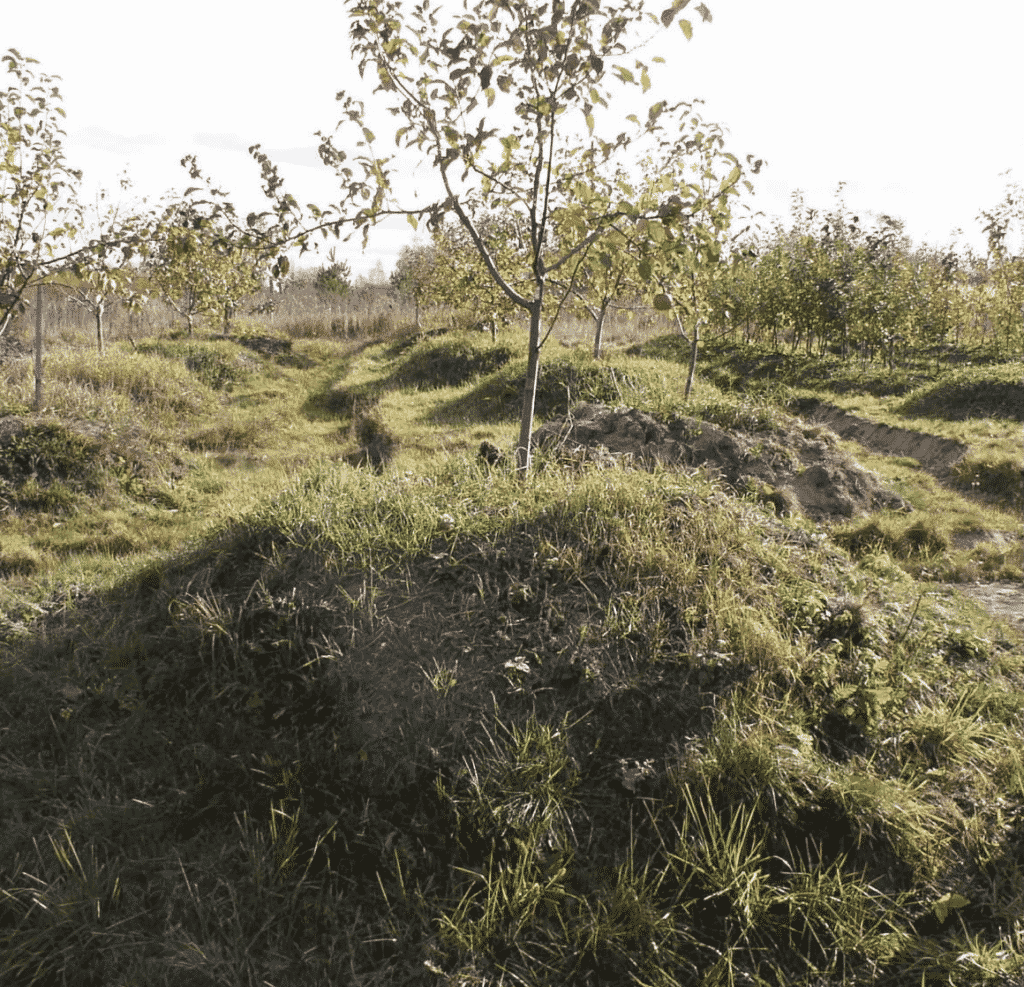
Nevertheless, taking care of the straightness of the trunk, when planting a fruit tree on a mound, a hillock, it is necessary to think over the protection of an immature apple tree from the leeward side, so the plant will develop organically, and not one-sided, as is the case with the constant exposure to cold air currents moving in one direction.
The preparation of the seat follows the general rules - drainage, nutrient layer, simple layer. In the absence of a natural hill, it can be created artificially, adding layers of sand, ash, peat.
Care
Each selected apple variety has its own care features, but for all the general stages:
- Loosening the soil in the spring.
- Pruning the crown.
- Nutrient input.
- Spraying with insecticides.
- Watering and drainage of the soil.
- Mulching the soil and painting the trunk.
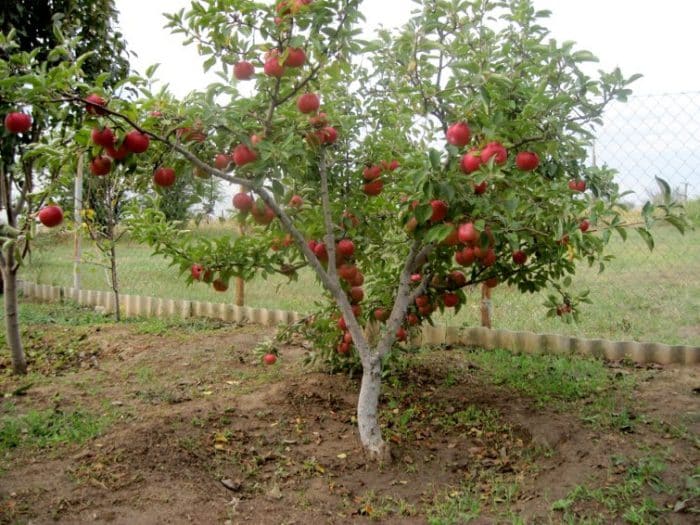
For all low-growing trees, a garter is required to a vertically installed support, this will set the vertical direction to the trunk, which the fragile roots cannot hold in this position on their own for the first 2-3 years after planting.
Top dressing
Top dressing is done as planned and as needed. The introduction of foliar dressings is dictated by the need for microelements for the development of the plant, for gaining strength. Each apple tree requires nitrogen in the soil at the stage of flowering, the formation of ovaries. This element makes the soil looser, more breathable.
For maximum quality and weight of the fruit, substances such as phosphorus, potassium, magnesium are required. They are introduced into the soil in dissolved form or scattered in dosage near the plant trunk. These are necessary measures, because the apple microelements are needed in small quantities, their excess will worsen the yield in taste and the total weight of the fruit, while individual apples will be gigantic.
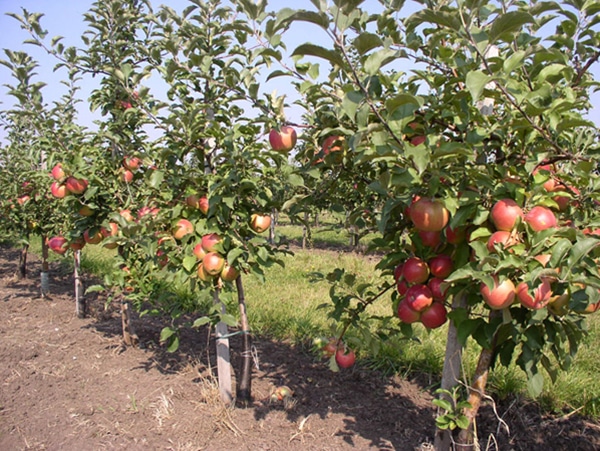
Pruning
An obligatory preventive stage is pruning branches, weak shoots on thickening crowns.The need for unscheduled pruning arises among gardeners after harsh winters, if the trees have undergone frostbite. Long shoots of tall trees are shortened in autumn to 60 cm of fresh growth. For dwarf apple trees, pruning is used to plan next year's harvest.
When an apple tree is affected by fungal diseases or insect pests, unscheduled pruning is performed at any stage of plant development, no matter how painful such a surgical intervention is for it, it is necessary to save the tree as a whole.
Watering
Different varieties of apple trees react in a special way to drought and rain. For young trees, watering during prolonged dry periods is a must. On sandy loam, watering is done once a week at the rate of 10 liters of water for each meter of trunk height. On sandstones, watering is more scarce, but frequent - once every 3-4 days.

Moisture intensively, evenly evaporates through the leaves of the apple tree on hot days. With an excess of it, the plant can get sunburn, so watering is done at sunset or sunrise.
Ways to protect apple trees from groundwater
When planting a dwarf apple tree it is not necessary to use open ground, it can be placed in a high box made of boards filled with fertile soil mixed with compost. In areas with prolonged rains, this method of planting apple trees has its own reason - the outflow of excess moisture. The disadvantage of such a planting is the rapid freezing of the box, which is a threat to the root system. Slate or roofing felt should be used as a waterproofing and insulating material. The same roofing materials will help in maintaining soil moisture during drought.
It is much easier to create a favorable microclimate for a low-growing plant than for a tall one - this is another argument in favor of columnar varieties of apple trees.
Bituminous and pressed covering materials are not of interest and scare away rodents, which again speaks in favor of growing fruit crops in high boxes with a wall width of 2 by 2 m on bulk soils.
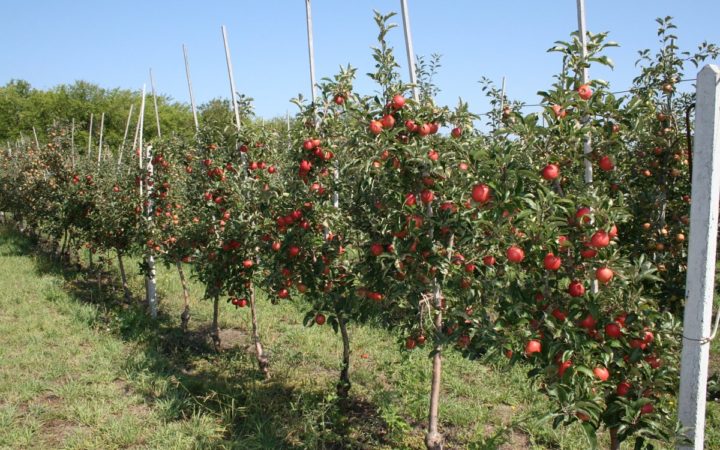
Planting specifics for different types of soil
When preparing a planting site, it is extremely important to take into account the characteristics of the soil. If it is acidic, it will lead to the reproduction of the midges next to the trunk of the fruit tree. Accordingly, the larvae will be deposited in the bark of the apple tree, on the leaves and fruits. Such a dinner will attract birds long before the apples ripen, the harvest will be spoiled. The way out of this situation is to lower the acidity of the soil by means of special chemical compositions or furnace ash.
Dense soils for fruit trees are a drawback that does not allow the root system to receive sufficient water and air. Before planting, such a soil for filling the planting hole is mixed with a nutrient mixture and sand, which makes the soil looser. From time to time you will have to pour sand under the apple tree, on the soil above the root system, the sand, along with moisture, will go into the ground, loosening it in a natural way. Sandy soils before planting an apple tree, on the contrary, will have to be compacted with limestone and clay.

